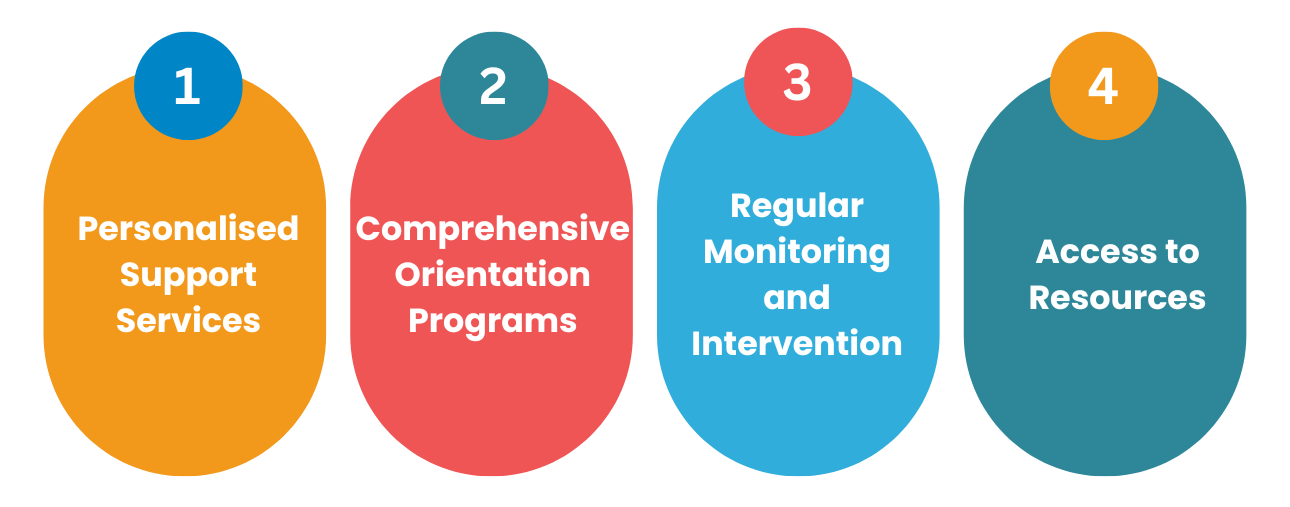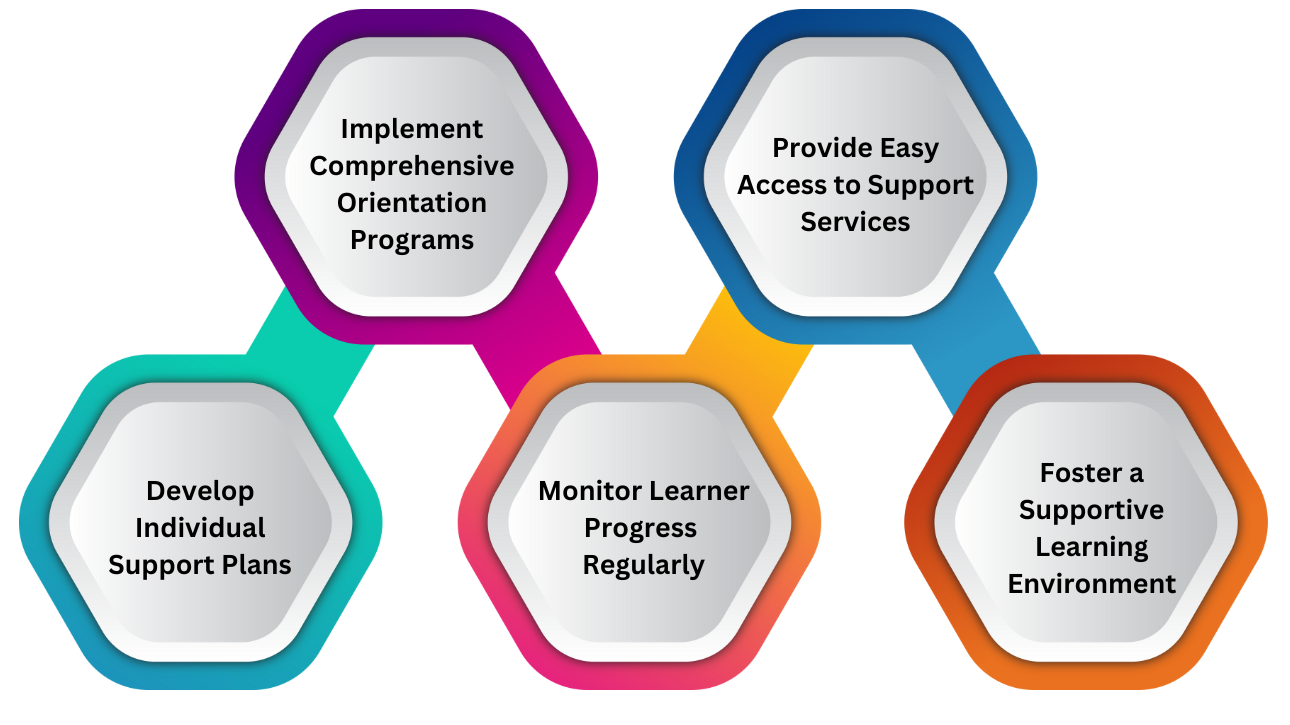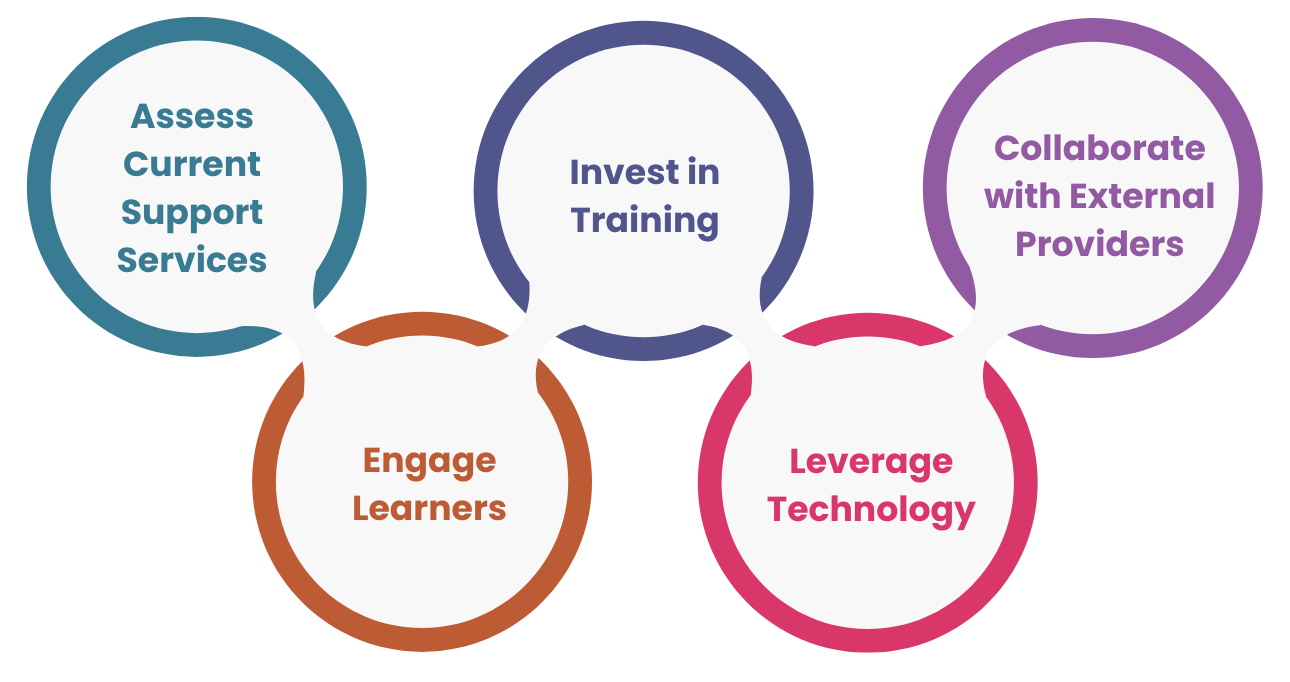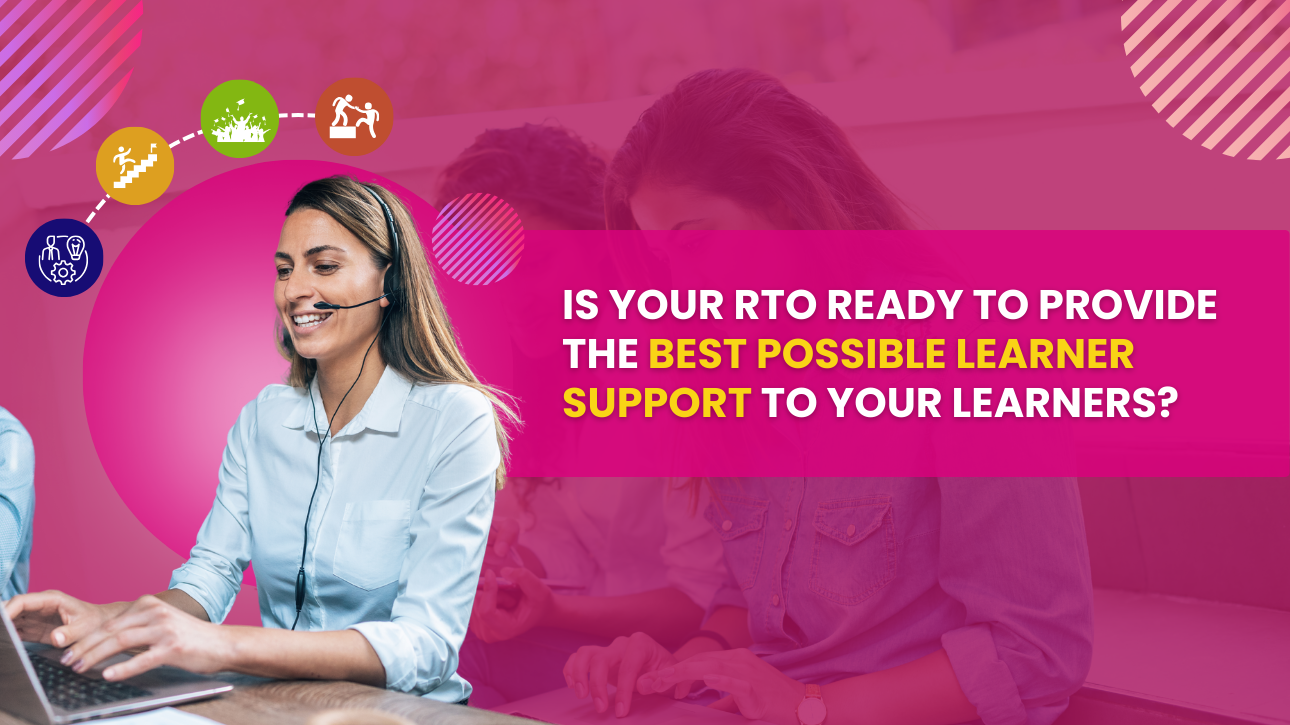✔️ Is your RTO ready to provide the best possible learner support to your learners?
✔️ Is your RTO ready to provide the best possible learner support to your learners?
✔️Discover how to enhance your learner support to meet new requirements and ensure your students succeed.
Introduction:
Learner support is the cornerstone of a successful educational experience. As RTOs navigate the evolving landscape of vocational education and training (VET), providing robust support services is more crucial than ever. The draft revised standards introduce new requirements aimed at improving learner support, ensuring that all students have the resources they need to thrive. This blog will explore these updates and offer practical steps to enhance your learner support services in compliance with the new standards.
Why Learner Support Matters:
Effective learner support can significantly impact student outcomes, retention rates, and overall satisfaction. The draft revised standards focus on ensuring that RTOs provide comprehensive support services tailored to individual learner needs. These updates aim to:

- Improve Student Success: By providing tailored support, learners are more likely to complete their courses successfully.
- Enhance Learning Experience: Access to adequate support services enhances the overall educational experience for learners.
- Ensure Compliance: Meeting updated support requirements helps your RTO maintain compliance and demonstrate a commitment to quality education.
Key Updates in the Draft Revised Standards:

- Personalised Support Services:
- RTOs must provide tailored support to meet individual learner needs, including academic, language, literacy, and numeracy support.
- Personalised support plans should be developed for learners requiring additional assistance.
- Comprehensive Orientation Programs:
- Orientation programs must provide learners with essential information on course requirements, support services, and their rights and responsibilities.
- These programs should help learners acclimatise to their new learning environment and understand the resources available to them.
- Regular Monitoring and Intervention:
- Implement systems to regularly monitor learner progress and provide timely interventions when needed.
- Early identification of learners at risk of falling behind is crucial for offering the necessary support.
- Access to Resources:
- Ensure learners have access to resources, including academic support, counselling, and career advice.
- Provide information on available resources during orientation and throughout the course.
Best Practices for Enhancing Learner Support:
To meet the updated requirements and provide exceptional support services, consider implementing the following best practices:

- Develop Individual Support Plans:
- Create personalised support plans based on the unique needs of each learner.
- Regularly review and update these plans to ensure they remain effective.
- Implement Comprehensive Orientation Programs:
- Design orientation programs that cover all aspects of learner support, including academic resources, personal support services, and technical assistance.
- Use engaging and interactive formats to ensure learners retain the information.
- Monitor Learner Progress Regularly:
- Establish a system for tracking learner progress and identifying those who may need additional support.
- Use data analytics to gain insights into learner performance and implement early interventions.
- Provide Easy Access to Support Services:
- Ensure learners can easily access support services, both on-campus and online.
- Promote these services regularly and ensure learners know how to access them.
- Foster a Supportive Learning Environment:
- Create a welcoming and inclusive atmosphere that encourages learners to seek help when needed.
- Train staff to be proactive in identifying and addressing learner needs.
Practical Guide for RTOs:
To ensure your RTO meets the updated learner support requirements, follow these practical steps:

- Assess Current Support Services: Review your existing support services to identify any gaps or areas for improvement.
- Engage Learners: Solicit feedback from learners about their support needs and experiences.
- Invest in Training: Provide training for staff to ensure they are equipped to offer high-quality support.
- Leverage Technology: Use digital tools and platforms to enhance accessibility and efficiency of support services.
- Collaborate with External Providers: Partner with external organisations to offer additional support services, such as mental health counselling and career advice.
Looking Ahead: In our next blog, we will discuss the importance of compliance with legislation and provide practical guidance on how your RTO can ensure adherence to all relevant laws and regulations. Staying compliant is crucial for the longevity and success of your RTO.
Stay tuned for Blog 4: “Ensuring Compliance with Legislation – A Practical Guide in the Draft Revised Standards”.
For further information on the draft revised standards, visit the Department of Employment and Workplace Relations’ Quality Reforms page.
Disclaimer:
The information presented on the VET Resources blog is for general guidance only. While we strive for accuracy, we cannot guarantee the completeness or timeliness of the information. VET Resources is not responsible for any errors or omissions, or for the results obtained from the use of this information. Always consult a professional for advice tailored to your circumstances.






